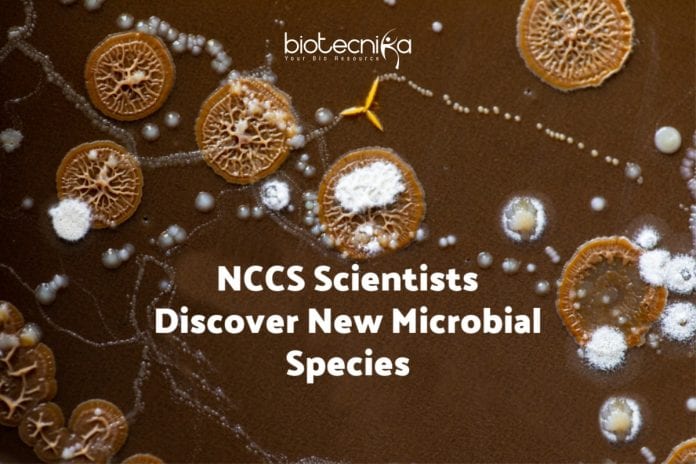NCCS Scientists Discover New Species of Microorganism
Natrialba swarupiae, the new microbial species discovered by NCCS scientists.
India’s largest inland salt lake is the Sambhar Lake in Rajasthan. This lake is likely to harbor hitherto unknown microbial communities because of being a lake with very high salt concentrations, i.e. a hypersaline ecosystem. It also provides a unique opportunity to microbial ecologists for studying halophiles, i.e. microorganisms which grow well in the presence of high salt concentrations, that they inhibit the growth of most other microbes due to such high concentrations. Even now, this lake’s microbial ecology, especially the specific kind of microorganisms called “archaea” is poorly studied.
The domains of life, other than eukaryotes (plants, animals, fungi & protists) and bacteria, archaea come under one of the three main domains of life and are the most primitive group of life forms. Archaea are not the same as bacteria but are almost similar to them. In extreme environments like highly saline, acidic, or alkaline environments, or in environments like hot springs, cold deserts, these species can be found. In laboratories, due to several challenges like being sensitive to impurities and detergents in the growth media, they are very difficult to grow in the laboratory, also having limitations in creating exact replication of their natural habitat’s physiochemical conditions in the laboratory. In studying these complex organisms, there are very few researchers who are involved in their growth-based studies as archaea grow very slowly in the laboratory.
The scientists at the National Centre for Cell Science (NCCS), Pune, were prompted to take up the challenge of exploring the Sambhar lake for archaea due to the dearth of studies on archaea from this lake. This lead to the discovery of Natrialba swarupiae, a novel archael species. In recognition of an invaluable role by Dr. Renu Swarup in simplifying some of the provisions of the Biodiversity Act 2002 to ease the deposition of microorganisms in repositories for microbes (culture collections) located outside India, the researchers named the newly discovered species after the Secretary, Department of Biotechnology, Government of India, Dr. Renu Swarup.
Researchers are required to deposit the discovered species in at least two culture collections located in different countries whenever a novel microbial species are discovered. This is a part of the process of naming and describing it for the species to be formally recognized as a novel microorganism as the simplification of the provisions holds special relevance for the taxonomy (classification) of microorganisms.
At NCCS, Dr. Swaup established her initiative, the Centre of Excellence for National Centre for Microbial Resource (NCMR, formerly Microbial Culture Collection, MCC), India’s largest microbial repository. She has been constantly supporting microbial diversity research in India. NCMR has included various different kinds of microbes collected from diverse environments across India and houses more than 2,00,000 culture holdings.
In the ‘International Journal of Systematic and Evolutionary Microbiology’, through the recent research article published, Natrialba swarupiae is formally recognized as a novel archael species.
The research study team consisted of Snigdha Pali, Neelima Deshpande, Yogesh Shouche, Swapnil Kajale, and Avinash Sharma.
NCCS Scientists Discover New Species SOURCE























